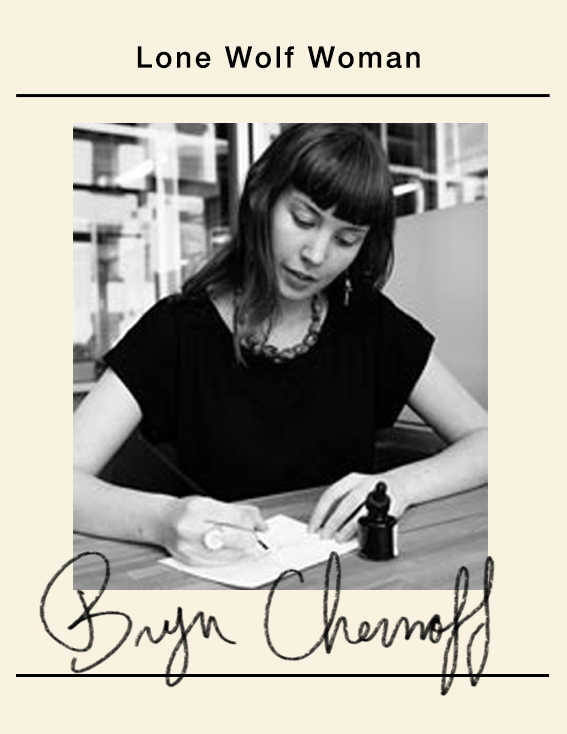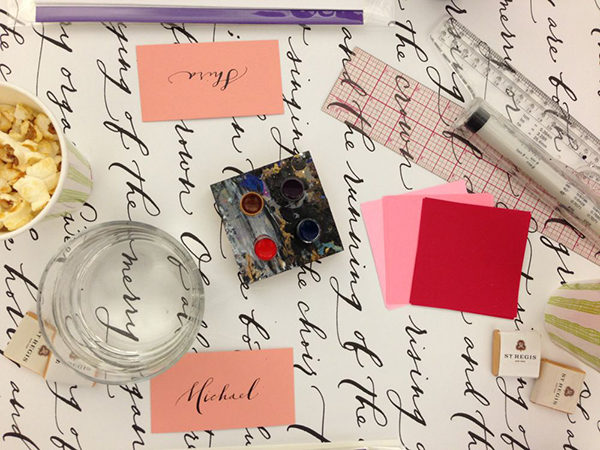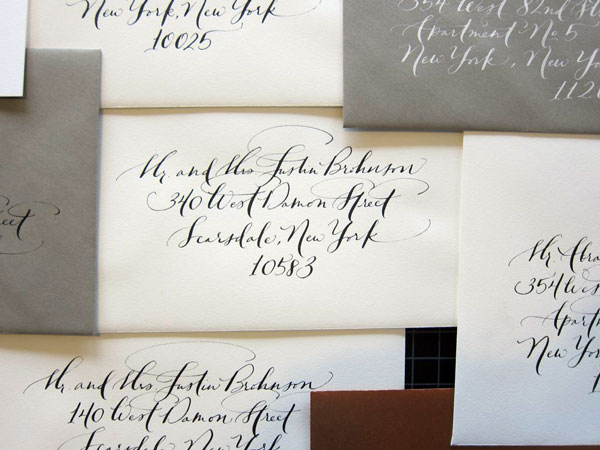I took my love of writing for granted as a kid. I wrote everything by hand, just for pure enjoyment. It didn’t occur to me that it could be my livelihood.

Bryn Chernoff’s handwriting is about a million times better than yours. And lucky for you, she’s happy to help you out. Bryn is the founder of Paperfinger, a calligraphy studio that teaches the fine art of writing, and creates some of the most beautiful letters you’ve ever seen. Bryn has managed to build a successful career out of an age-old art, in a world that is quickly forgetting how to hold a pen. If nothing else, her story teaches us that sometimes finding your dream job means using some imagination and stepping outside of the confines of traditional career choices. And let’s be honest, as far as non-traditional career choices go, Calligrapher has to be top of the list (somewhere alongside Cool Hunters and Storm Chasers). Becoming a successful freelancer is always hard, regardless of what specific thing you focus on, and so in that sense all self-made creative entrepreneurs are wildly impressive. But there’s something downright magical about someone who manages to not only find their passion and become an authority in their field, but also redefine an industry and show the world that anything is possible as long as you have the drive and talent to make it happen.
. . . . .
How would you describe what you do?
I am the owner and creative director of all things Paperfinger. I spend the majority of my time on calligraphy and illustration for our clients and products, sitting at my desk, pen and ink in hand. Paperfinger is a source for beautiful, contemporary calligraphy. This encompasses a range of design services and products – for gifts, weddings and events, art, tattoos, branding and stationery goods.
I took my love of writing for granted as a kid. I wrote everything by hand, just for the pure enjoyment. It didn’t occur to me that it could be my livelihood until about age 28 when I began offering calligraphy to my friends for their weddings. My buds knew it as a hobby, but once I had a few practice jobs under my belt, I realized that my more modern approach was being received well and that there might actually be a market for the kind of calligraphy I wanted to do. It was intimidating but the feedback from my peers was encouraging. And if I loved doing it for free, I knew that was a good sign!

The balance of pursuing a satisfying income vs experimenting creatively can be tricky to navigate. Initially, there was the financial risk of starting my own business. But even since that stabilized into a reliable income, I still struggle with finding time for creative work that will expand my skills and ideas.
Do you think you changed a lot in order to get to this point in your career?
I actually think less about change when I look at myself now. I feel that I returned to home-base when I established myself as a calligrapher. I know that my 8-year-old self would love this job. So perhaps what’s most significant is that my work makes me feel like my true self.
How did you know this is something you wanted to do and that you would stick to it?
It helped that when I began offering calligraphy, I still had my previous job for security. For that reason, I could experiment with this work, and test it out a bit. After multiple projects, it was obvious how happy it made me and clear that I wanted to pursue it further. It’s a low-risk business to start – minimal setup and overhead upfront so I knew I always had (and continue to have) the option to change my mind and discontinue the work. That was six and a half years ago. I still check in regularly with myself. Like, “Bryn, how does it feel to go to the studio today?” And nearly every day, I feel really good about it.

Being professional, kind and reliable is just as important as the quality of my work. That is what brings clients back again and again. People want to work with folks they like and can rely on.
How do you think your work helps others?
Artists offer us space, moments and environments to feel and think. In all sorts of ways. In my work, I want people to feel pleasure when they see something beautiful; I want them to feel intimacy and closeness when they see their name hand-calligraphed; I want them to feel a moment of quiet slowing down when they realize that something was hand-done; I want them to feel a sense of creative possibility in their own life when they hear my story and when they define calligraphy more broadly and freely.
I loved reading the book “The Big Enough Company” because it spoke to my desire for creating my own definition of success. Success for me is not about having as many clients as possible. It’s about filling my work time with great projects and then having plenty of time for life outside of the studio. In this past year I became a mom, and I’m so grateful to have a flexible schedule I can build for myself so that I have plenty of time with my daughter in these early days.

What are some risks and sacrifices you’ve faced pursuing your creativity?
The balance of pursuing a satisfying income vs experimenting creatively can be tricky to navigate. Initially, there was the financial risk of starting my own business. But even since that stabilized into a reliable income, I still struggle with finding time for creative work that will expand my skills and ideas — since that time is not necessarily paid work at first, I need to carve the time out on my own. Prioritizing time to grow and expand what I do creatively can cost money since it cuts into time I make for my clients. And that is risky. Since there’s nothing more reassuring than churning out paid work. But it’s so vital to create for the sake of creating — so I keep trying. Overall, I think many new business owners think that the first leap into entrepreneurship is the only scary moment. But I realize that there continue to be new leaps and new risks all the time.
What has been your most successful form of marketing?
Editorial features on blogs, in both the graphic design and wedding blog communities. I follow a lot of folks from different design and creative communities on Instagram and Feedly (blogs) for day-to-day inspiration and a sense of what’s going on out there. The kind and quality of feedback I get from certain images I post of Instagram helps tell me a lot about what people are responding to as well. But all this is measured with a bit of caution. I like to glance at ideas and similar work around me but I also like to keep some space for my imagination to roam around without too much outside input.

Be prepared to work really hard. But happily. There’s no one to resent or blame when you’re in charge. So the longer hours at first will be deeply rewarding if you love and care about what you do.
What advice do you have for those looking to go from employee to entrepreneur/from taking orders to being the one in charge?
Be prepared to work really hard. But happily. There’s no one to resent or blame when you’re in charge. So the longer hours at first will be deeply rewarding if you love and care about what you do. Don’t forget to ask for help and for input. It can be easy to get too insular and assume too much about how your target audience will react or respond to something you do. Ask people. Share your ideas to get input from smart people you respect. It’s fun to be the ultimate decision maker, but just remember to get out of your own head and perspective before making any major business decisions.
Do you find yourself curating your thoughts and preferences towards your content based on what your audience wants?
It matters to me that people like my work. But I also know that my style and aesthetic is not for everyone. I do better work when I trust my gut and don’t worry about what people will think. And my ideal client will like what I like and be in sync. The best client relationships are when we both respond to a similar aesthetic — then we’re both excited and happy with the final result.
Is working by and for yourself lonely? What do you do to counteract it?
I love the solitude. But of course, the closeness of colleagues is something I miss about “regular” jobs. I make up for that by keeping up my friendships with fellow business owners in my creative communities. I need the comradery of getting together, talking through nitty gritty aspects of work, griping about something, having a drink, celebrating each other’s successes. Thankfully, a world of really inspiring folks out there also need that camaraderie as well.
What is your dream project?
A giant white-wall space where I can work for one month straight on crazy new ideas. And where I can write and draw BIG.



